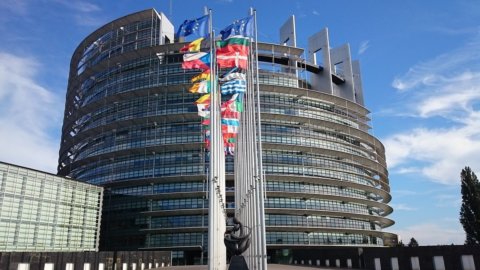Christian Solinas is the new president of the Sardinia Region. THEThe centre-right candidate prevails over his rivals with 47,8%. According to the center-left representative Massimo Zedda with 32,9% of the preferences. The 5 Star Movement collapses: Francesco Desogus stops at 11,2%, while at the "party" level the pentastellati collapse to 9,7%. In the March 4 elections, they had exceeded 42%.
Solinas, born in 1976, from Cagliari, comes from the Sardinian Action Party, of which he has been secretary since 2015. Senator of the League, former Christian Democrat of the Cossighian rite, he was transport councilor in the Berlusconi council of Ugo Cappellacci.
“Sardinia won today. I thank the Sardinians for their trust, the government project we presented was rewarded. I've never seen a heads up, that wasn't true, 14 points ahead represent an incontrovertible fact“, says Solinas immediately after the victory.
The centre-left therefore loses the leadership of the Sardinia Region, but compared to the results of the policies and the Abruzzo regional elections, it scores an encouraging performance, with the Democratic Party reaching 13,4% and remaining the first party, closely followed by the League with 11,3 .XNUMX%.
“The result – says Zedda when the count is more than half – gives the victory to the centre-right. I tried to call Christian Solinas and I already sent him a message to wish him good work."
The Carroccio is currently winning the internal challenge in the centre-right, followed by the Sardinian Action Party with 9,9% and Forza Italia with 8%. Fdi at 4,7%. Overall, the centre-right coalition won 51,77% of the vote.
“From policies to today, if there is one thing that is certain, it is that out of six electoral consultations, the League wins 6 to zero over the Democratic Party. Even in Sardinia, after Friuli, Molise, Trento, Bolzano and Abruzzo, the citizens have chosen to let the League govern. And as in Abruzzo, it is also the first time in Sardinia that we present ourselves at the Regionals. Thanks to all those who have decided to trust us”. This is the comment of the secretary of the League, Matteo Salvini.
But the M5S suffers the heaviest defeat. After the heavy drop recorded a few weeks ago in Abruzzo, where the pentastellati had in any case managed to stay above 20%, Sardinia represents a definitive alarm bell in view of the European elections on 26 May and above all it certifies a U-turn in the balance of power present within the Government. A reversal already witnessed by the polls, which however, with the endorsement of the elections, could lead to important changes in the axis that leads the Executive. But try to minimize it Luigi Di Maio who, in a still ongoing scrutiny, stated: “I don't see any problem. Obviously the official data is not there yet: but we are 'positive' because for the first time we are entering Sardinia with regional councilors”, he said, specifying that the Movement is “alive and well” and will continue with its reorganisation.
"It is useless to compare the administrative data with the policies - continues the deputy prime minister - we have always had different results from the national one at an administrative level and also in this case Sardinia is no exception".
However, the words of the political leader do not stop the analysis of the "causes and consequences" of the collapse. It is difficult to see only the scarce roots in the territory that has always characterized the Five Stars and which traditionally conditions all the local results of the party at the basis of the pentastellato collapse. After eight months of government, the haemorrhage of consensus seems to portend something more.
The counting of votes, which began at 7 am on 25 February, went very slowly: the data was disclosed only in aggregate form, in a predefined manner. In particular, the Municipalities that have from 1 to 10 sections have provided the data at the end of the operations (100% of the sections scrutinized), those that have between 11 and 30 sections have given the first results when 50% of the scrutiny, while for the larger Municipalities, such as the provincial capitals and Cagliari itself, the data was provided when 25% of the sections scrutinized were reached.
The Region of Sardinia has also confirmed the data on theaffluence. 790.709 voters out of 1.470.401 eligible voters went to vote, a figure which in percentage terms corresponds to 53,77%.
(Last update: 10.15 pm on 26 February).





